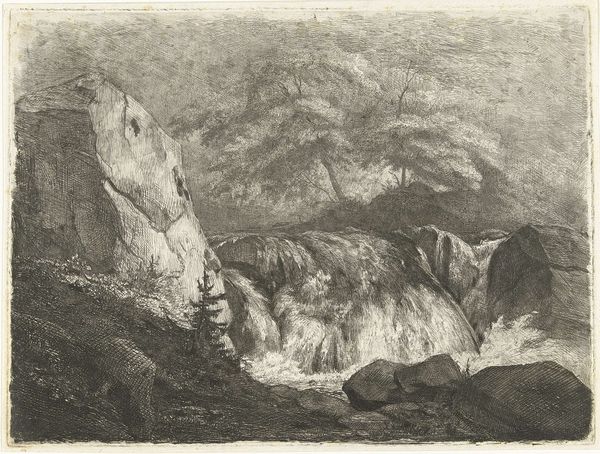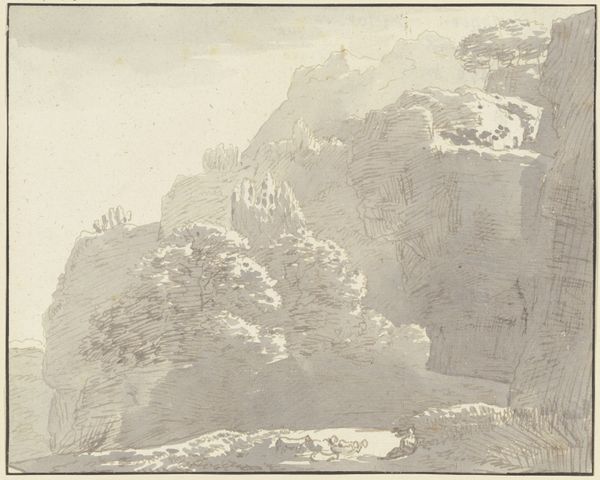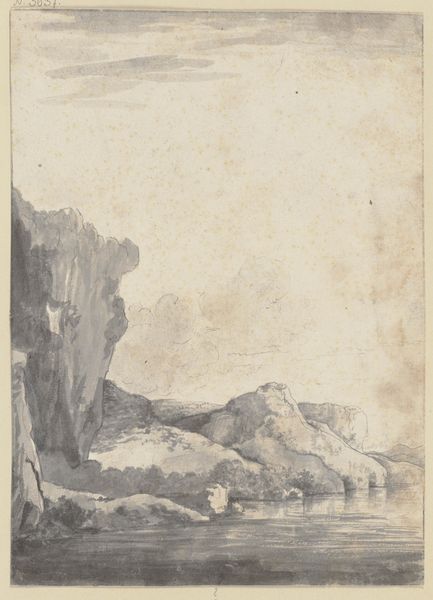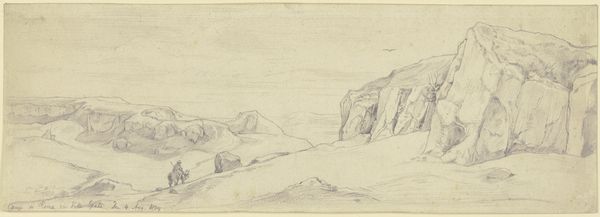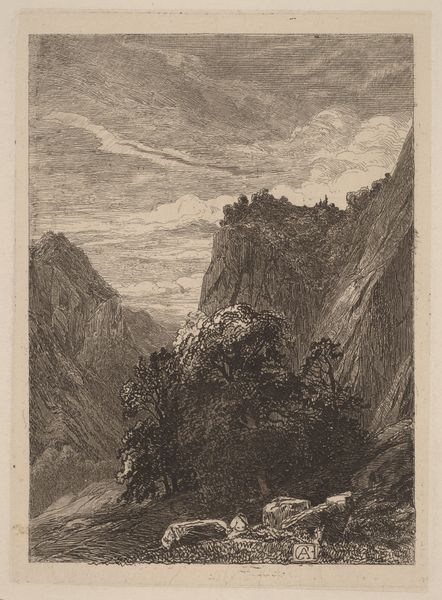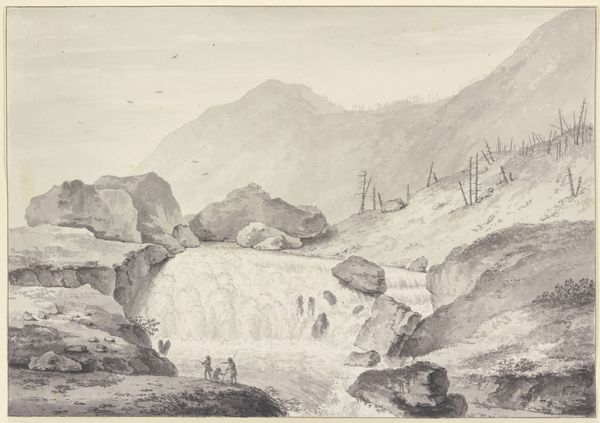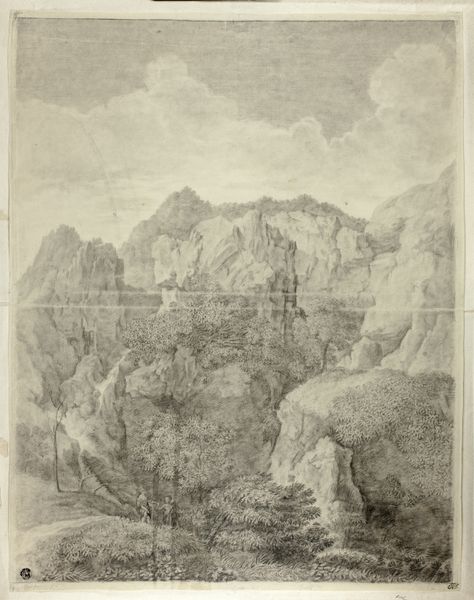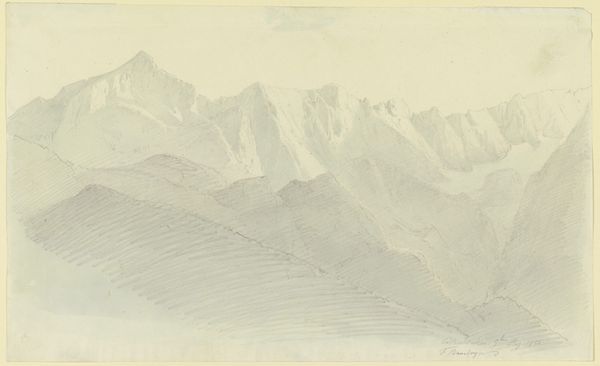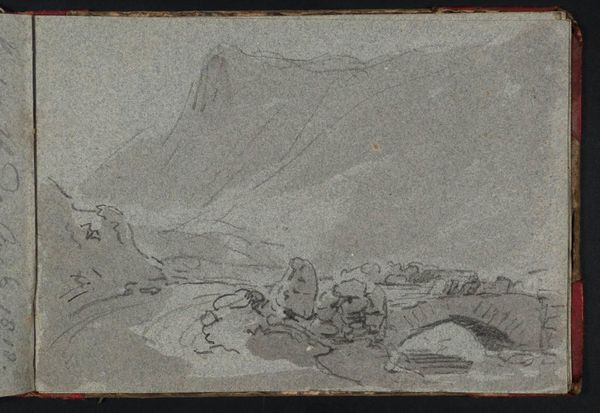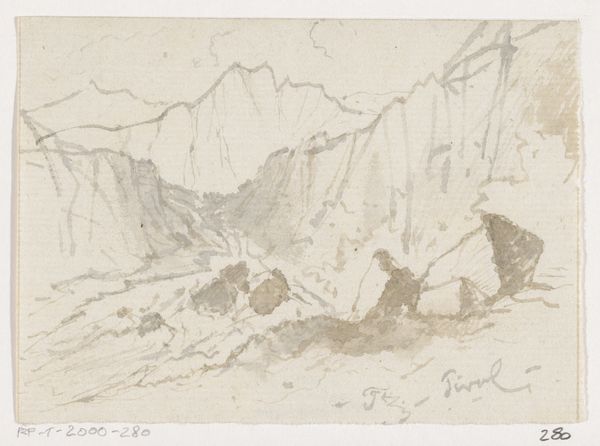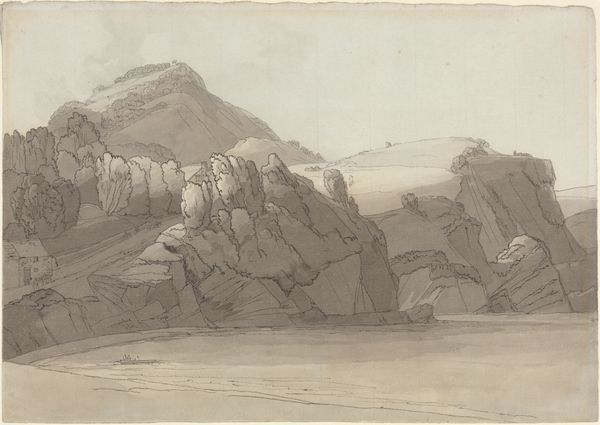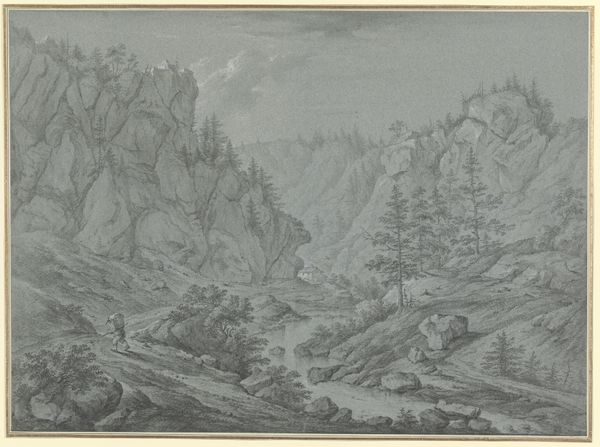
Die Teufelsbrücke an der Via Mala bei Andermatt im Kanton Uri c. 1780
0:00
0:00
Copyright: Public Domain
This drawing of the Devil's Bridge was made by Franz Schütz, sometime in the late 18th century, using graphite on paper. Here, the artist isn't dealing with clay, metal, wood, or other common sculptural or craft media; instead, it's a matter of close observation, and skillful manipulation of a humble material, graphite. Look closely, and you'll see the artist is attempting to convey the sublime quality of nature. Note the way the marks build up and define the rock formations. The bridge itself, a feat of engineering, is dwarfed by the surrounding landscape. The Devil's Bridge isn't just a bridge; it's a symbol of human ambition and ingenuity set against the overwhelming power of the natural world. Consider the labor involved, both in building the bridge itself, and in the artist's careful rendering of the scene. Schütz is reminding us that even the most impressive human achievements are ultimately fragile in the face of nature's grandeur. The drawing, in its own way, is a testament to human effort and our place in the wider world.
Comments
No comments
Be the first to comment and join the conversation on the ultimate creative platform.
